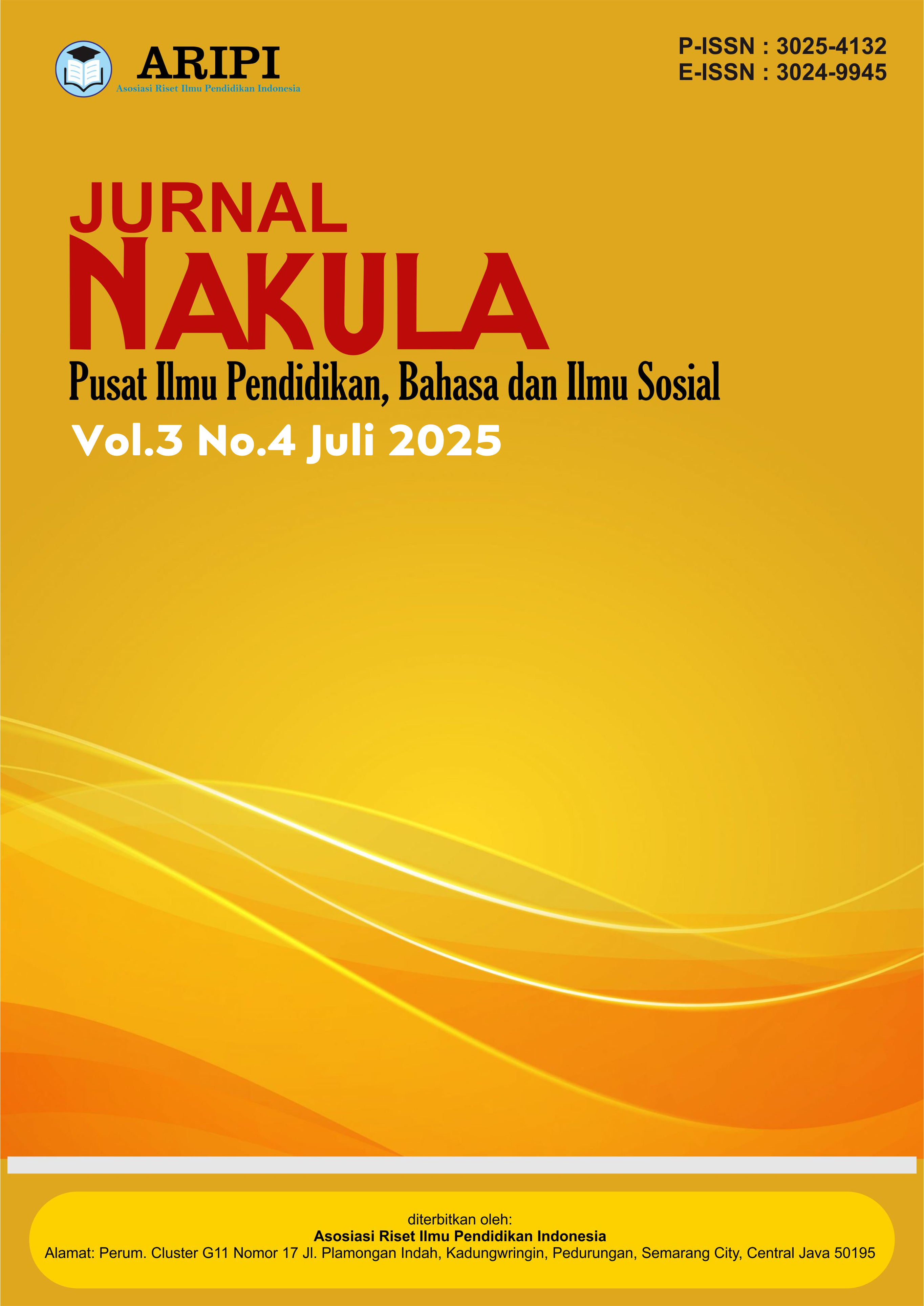Analisis Fungsi Denyut Nadi dalam Identifikasi Awal Henti Jantung pada Sistem Pertolongan Pertama
DOI:
https://doi.org/10.61132/nakula.v3i4.1862Keywords:
Cardiac arrest, first aid, pulseAbstract
Basic knowledge of first aid is an essential competency that must be possessed by prospective elementary school teachers, as teachers often act as first responders in medical emergencies at school. This study aims to analyze the function of the pulse in the early identification of cardiac core function as part of the first aid system. The method used is a qualitative descriptive approach through literature review from scientific sources related to cardiac anatomy and physiology, pulse examination techniques, and international first aid guidelines. The findings indicate that the pulse is a vital indicator reflecting the performance of the heart's core system, particularly the sinoatrial (SA) node and atrioventricular (AV) node. The absence of a detectable pulse signifies a serious disruption in the circulatory system and serves as the basis for emergency interventions such as cardiopulmonary resuscitation (CPR). In the context of elementary education, teachers need the skills to recognize and assess the pulse to make quick and accurate decisions during critical situations. Therefore, training in first aid skills, including pulse assessment, should be integrated into PGSD (Primary School Teacher Education) programs to prepare responsive and capable educators for emergency situations.
Downloads
References
American Heart Association. (2020). Highlights of the American Heart Association guidelines: CPR and ECC. American Heart Association.
Bledsoe, B. E., Casey, M. J., Feldman, J., Johnson, L., & McGowan, J. (2015). Glasgow Coma Scale scoring is often inaccurate. Prehospital and Disaster Medicine, 30(1), 46–53.
Braun, V., & Clarke, V. (2006). Using thematic analysis in psychology. Qualitative Research in Psychology, 3(2), 77–101. https://doi.org/10.1191/1478088706qp063oa
Creswell, J. W. (2014). Research design: Qualitative, quantitative, and mixed methods approaches (4th ed.). SAGE Publications.
Guyton, A. C., & Hall, J. E. (2021). Guyton & Hall physiology review (5th ed.). Elsevier Health Sciences.
Hall, J. E. (2020). Guyton & Hall physiology review (5th ed.). Elsevier Health Sciences.
Miles, M. B., Huberman, A. M., & Saldaña, J. (2014). Qualitative data analysis: A methods sourcebook (3rd ed.). SAGE Publications.
Mulyasa. (2019). Analisis model pembelajaran berkarakter dan relevansinya terhadap pendidikan Islam. Remaja Rosdakarya.
Mulyasa, P. E. (2019). Analisis model pembelajaran berkarakter dan relevansinya terhadap pendidikan Islam. Remaja Rosdakarya.
Ommen, S. R., Mital, S., Burke, M. A., Day, S. M., Deswal, A., Elliott, P., ... & American College of Cardiology/American Heart Association Joint Committee on Clinical Practice Guidelines. (2020). 2020 AHA/ACC guideline for the diagnosis and treatment of patients with hypertrophic cardiomyopathy: A report of the American College of Cardiology/American Heart Association Joint Committee on Clinical Practice Guidelines. Journal of the American College of Cardiology, 76(25), e159–e240. https://doi.org/10.1016/j.jacc.2020.08.045
Setiawan, A., & Lestari, T. (2021). Kebijakan pendidikan karakter dalam meminimalisir kenakalan remaja. Jurnal Penelitian dan Kajian Sosial Keagamaan, 18(2), 62–71.
Sugiyono. (2019). Metode penelitian kualitatif, kuantitatif, dan R&D. Alfabeta.
Tortora, G. J., & Derrickson, B. (2018). Principles of anatomy and physiology (15th ed.). John Wiley & Sons.
Yuniarti, A., & Widiastuti, I. (2022). Education for healthy hydroponic of spinach vegetable without pepticide to fulfill the nutritional needs of the family of Golong Village, Narmada District, West Lombok Regency. In Prosiding University Research Colloquium (pp. 23–28).
Downloads
Published
How to Cite
Issue
Section
License
Copyright (c) 2025 Jurnal Nakula : Pusat Ilmu Pendidikan, Bahasa dan Ilmu Sosial

This work is licensed under a Creative Commons Attribution-ShareAlike 4.0 International License.





